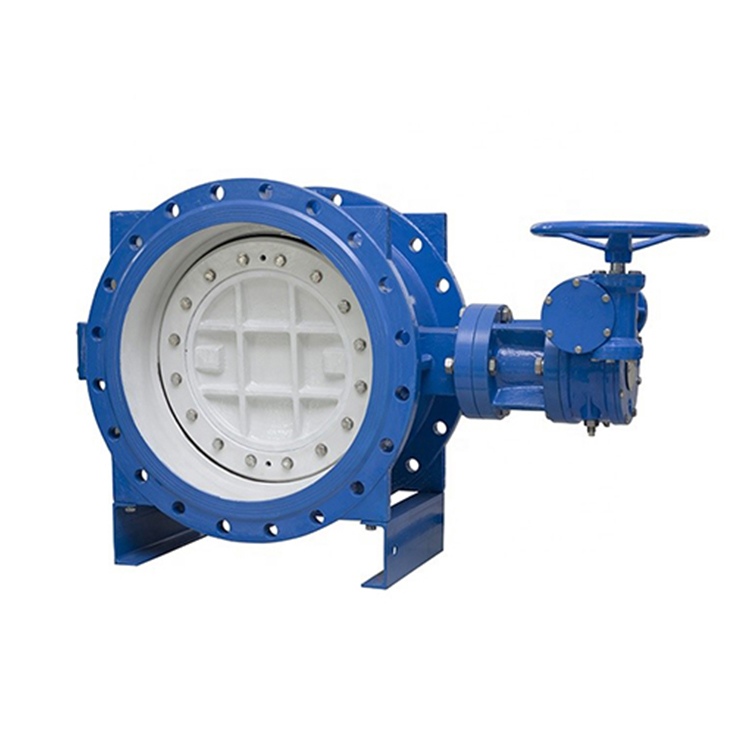 English
English Español
Español  Português
Português  русский
русский  Français
Français  日本語
日本語  Deutsch
Deutsch  tiếng Việt
tiếng Việt  Italiano
Italiano  Nederlands
Nederlands  ภาษาไทย
ภาษาไทย  Polski
Polski  한국어
한국어  Svenska
Svenska  magyar
magyar  Malay
Malay  বাংলা ভাষার
বাংলা ভাষার  Dansk
Dansk  Suomi
Suomi  हिन्दी
हिन्दी  Pilipino
Pilipino  Türkçe
Türkçe  Gaeilge
Gaeilge  العربية
العربية  Indonesia
Indonesia  Norsk
Norsk  تمل
تمل  český
český  ελληνικά
ελληνικά  український
український  Javanese
Javanese  فارسی
فارسی  தமிழ்
தமிழ்  తెలుగు
తెలుగు  नेपाली
नेपाली  Burmese
Burmese  български
български  ລາວ
ລາວ  Latine
Latine  Қазақша
Қазақша  Euskal
Euskal  Azərbaycan
Azərbaycan  Slovenský jazyk
Slovenský jazyk  Македонски
Македонски  Lietuvos
Lietuvos  Eesti Keel
Eesti Keel  Română
Română  Slovenski
Slovenski  मराठी
मराठी  Srpski језик
Srpski језик
The difference between centerline butterfly valve single eccentric double eccentric triple eccentric butterfly valve
2021-11-13
The difference between the single eccentric double eccentric triple eccentric butterfly valve of the center line butterfly valve is introduced as follows:
1. Centerline butterfly valve (concentric butterfly valve)
The structural feature of the centerline butterfly valve is that the shaft center of the valve stem, the center of the butterfly plate, and the center of the body are in the same position. The structure is simple and the manufacturing is convenient. Common rubber-lined butterfly valves belong to this category. The disadvantage is that the butterfly plate and the valve seat are always in a state of squeezing and scratching, with a large resistance distance and rapid wear. In order to overcome squeezing, scratching, and to ensure the sealing performance, the valve seat basically uses elastic materials such as rubber or polytetrafluoroethylene, but it is also limited by the temperature in the use of the sealing material. This is why traditionally people think that butterfly valves are not resistant. The cause of the high temperature.
The structural feature of the single eccentric butterfly valve is that the shaft center of the valve stem deviates from the center of the butterfly plate, so that the lower end of the butterfly plate no longer becomes the rotation axis, disperses, reduces the excessive extrusion between the upper end of the butterfly plate and the valve seat, and solves the concentric butterfly valve. The squeeze problem of the butterfly plate and the valve seat. However, because the single eccentric structure does not disappear during the entire opening and closing process of the valve, the scratch between the butterfly plate and the valve seat has not disappeared.
3. Double eccentric butterfly valve
The double eccentric butterfly valve is further improved on the basis of the single eccentric butterfly valve, and its application is also very extensive. Its structural feature is that the axis of the valve stem deviates from the center of the butterfly plate and the center of the body. The double eccentric effect enables the butterfly plate to be released from the valve seat immediately after the valve is opened, which greatly eliminates unnecessary excessive extrusion and scratching of the butterfly plate and the valve seat, reduces the opening resistance, reduces wear and improves The life of the valve seat is improved. The scraping is greatly reduced, and at the same time, the double eccentric butterfly valve can also use a metal seat, which improves the application of the butterfly valve in the high temperature field. However, because the sealing principle is a positional sealing structure, that is, the sealing surface of the butterfly plate and the valve seat is in line contact, the elastic deformation caused by the butterfly plate squeezing the valve seat produces a sealing effect, so the closed position is very demanding (especially metal Valve seat), low pressure bearing capacity, which is why traditionally people think that butterfly valves are not resistant to high pressure and have large leakage.
Structural characteristics of double eccentric butterfly valve
To withstand high temperatures, hard seals must be used, but the amount of leakage is large; for zero leakage, soft seals must be used, but they are not resistant to high temperatures. In order to overcome the contradiction of the double eccentric butterfly valve, the butterfly valve was eccentric for the third time. Its structural feature is that while the double eccentric valve stem axis position is eccentric, the conical axis of the butterfly plate sealing surface is skewed to the cylinder axis of the body, that is to say, after the third eccentricity, the sealing section of the butterfly plate is not Furthermore, it is a true circle, but an ellipse, and the shape of the sealing surface is therefore asymmetric, one side is inclined to the center line of the body, and the other side is parallel to the center line of the body. A major feature of this third eccentricity is that the sealing structure is fundamentally changed. It is no longer a positional seal, but a torsion seal, that is, it does not rely on the elastic deformation of the valve seat, but completely depends on the contact surface pressure of the valve seat. The sealing effect, therefore, solves the problem of zero leakage of the metal valve seat in one fell swoop, and because the contact surface pressure is proportional to the medium pressure, the high pressure and high temperature resistance can also be easily solved.
1. Centerline butterfly valve (concentric butterfly valve)
The structural feature of the centerline butterfly valve is that the shaft center of the valve stem, the center of the butterfly plate, and the center of the body are in the same position. The structure is simple and the manufacturing is convenient. Common rubber-lined butterfly valves belong to this category. The disadvantage is that the butterfly plate and the valve seat are always in a state of squeezing and scratching, with a large resistance distance and rapid wear. In order to overcome squeezing, scratching, and to ensure the sealing performance, the valve seat basically uses elastic materials such as rubber or polytetrafluoroethylene, but it is also limited by the temperature in the use of the sealing material. This is why traditionally people think that butterfly valves are not resistant. The cause of the high temperature.

The structural feature of the single eccentric butterfly valve is that the shaft center of the valve stem deviates from the center of the butterfly plate, so that the lower end of the butterfly plate no longer becomes the rotation axis, disperses, reduces the excessive extrusion between the upper end of the butterfly plate and the valve seat, and solves the concentric butterfly valve. The squeeze problem of the butterfly plate and the valve seat. However, because the single eccentric structure does not disappear during the entire opening and closing process of the valve, the scratch between the butterfly plate and the valve seat has not disappeared.
3. Double eccentric butterfly valve
The double eccentric butterfly valve is further improved on the basis of the single eccentric butterfly valve, and its application is also very extensive. Its structural feature is that the axis of the valve stem deviates from the center of the butterfly plate and the center of the body. The double eccentric effect enables the butterfly plate to be released from the valve seat immediately after the valve is opened, which greatly eliminates unnecessary excessive extrusion and scratching of the butterfly plate and the valve seat, reduces the opening resistance, reduces wear and improves The life of the valve seat is improved. The scraping is greatly reduced, and at the same time, the double eccentric butterfly valve can also use a metal seat, which improves the application of the butterfly valve in the high temperature field. However, because the sealing principle is a positional sealing structure, that is, the sealing surface of the butterfly plate and the valve seat is in line contact, the elastic deformation caused by the butterfly plate squeezing the valve seat produces a sealing effect, so the closed position is very demanding (especially metal Valve seat), low pressure bearing capacity, which is why traditionally people think that butterfly valves are not resistant to high pressure and have large leakage.
Structural characteristics of double eccentric butterfly valve

To withstand high temperatures, hard seals must be used, but the amount of leakage is large; for zero leakage, soft seals must be used, but they are not resistant to high temperatures. In order to overcome the contradiction of the double eccentric butterfly valve, the butterfly valve was eccentric for the third time. Its structural feature is that while the double eccentric valve stem axis position is eccentric, the conical axis of the butterfly plate sealing surface is skewed to the cylinder axis of the body, that is to say, after the third eccentricity, the sealing section of the butterfly plate is not Furthermore, it is a true circle, but an ellipse, and the shape of the sealing surface is therefore asymmetric, one side is inclined to the center line of the body, and the other side is parallel to the center line of the body. A major feature of this third eccentricity is that the sealing structure is fundamentally changed. It is no longer a positional seal, but a torsion seal, that is, it does not rely on the elastic deformation of the valve seat, but completely depends on the contact surface pressure of the valve seat. The sealing effect, therefore, solves the problem of zero leakage of the metal valve seat in one fell swoop, and because the contact surface pressure is proportional to the medium pressure, the high pressure and high temperature resistance can also be easily solved.
We use cookies to offer you a better browsing experience, analyze site traffic and personalize content. By using this site, you agree to our use of cookies.
Privacy Policy




